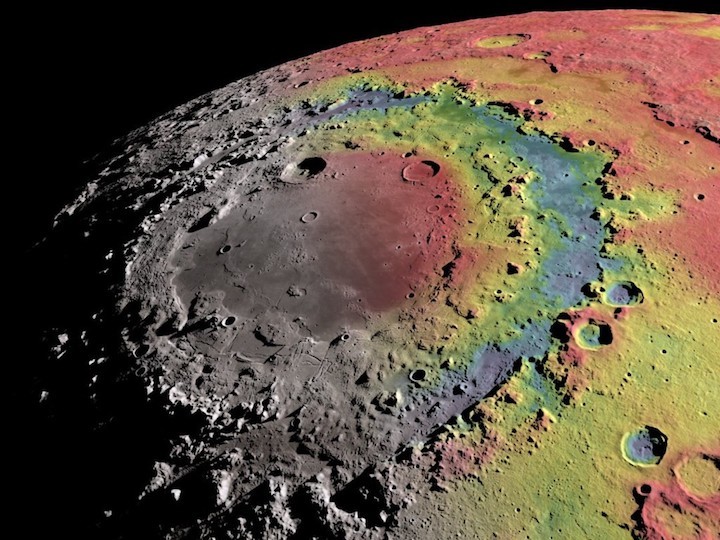NASA’s Goddard Space Flight Center has released a breathtaking new video tour of the Moon in 4K resolution, stitching together some of the most detailed observations captured by the Lunar Reconnaissance Orbiter (LRO). The video is a new version of an LRO Moon tour released back in 2011, but this time it has been enhanced to precision resolution and includes new data from the spacecraft, which has been in a polar orbit around the Moon since for nearly a decade.
Ernie Wright, the lead visualizer of the project, told me over email that it’s fair to say that this is the most detailed, high-resolution tour of the Moon to date, though he added that the Goddard team has previously released 4K visualizations of individual sites. This new video, however, visits several locations, and includes many close-up images of the lunar surface.
The tour kicks off on the western edge of the Moon, at the Mare Orientale (aka the Orientale Basin), where the sunlit near side meets the shadowy far side. By superimposing geological data obtained by NASA’s GRAIL probes, which impacted with the Moon over the New Year in 2012, the tour demonstrates how scientists generate models of the lunar crust from orbit.

The video then pans to the lunar south pole, where it can get as cold as -396°F (-238°C), making it a place with “some of the coldest recorded temperatures in the solar system,” according to the narrator. The region is home to Shackleton Crater, a 13-mile-wide impact site named for the Antarctic explorer Ernest Shackleton, in keeping with the “south pole” theme. The lunar southern region is also sculpted by the colossal South Pole–Aitken basin, which stretches across 1,550 miles, making it one of the largest known impact craters in the solar system.
The next stop on the tour is Tycho Crater, which was formed 100 million years ago, followed by the Aristarchus Plateau, which is visible with the naked eye from Earth. But perhaps the most interesting site for human spaceflight enthusiasts is the Taurus-Littrow Valley, where Apollo 17 astronauts Eugene Cernan and Harrison Schmitt landed in December 1972, to become the last two humans to walk on the Moon (so far). The video sketches out their exploration of the region, and shows how the LRO’s camera are sharp enough to observe the remains of the lander and rover.
Last but not least, the tour hits up the Moon’s north pole, which the video narrator suggests may be an “ideal” spot for solar-powered bases in future missions, due to the ample sunlight available at these high lunar latitudes.
While the sight of a bright full Moon on a clear night has enraptured countless generations of human beings, these close-up visuals of the lunar surface provide a whole new perspective on Earth’s natural satellite.
Quelle: Motherboard
